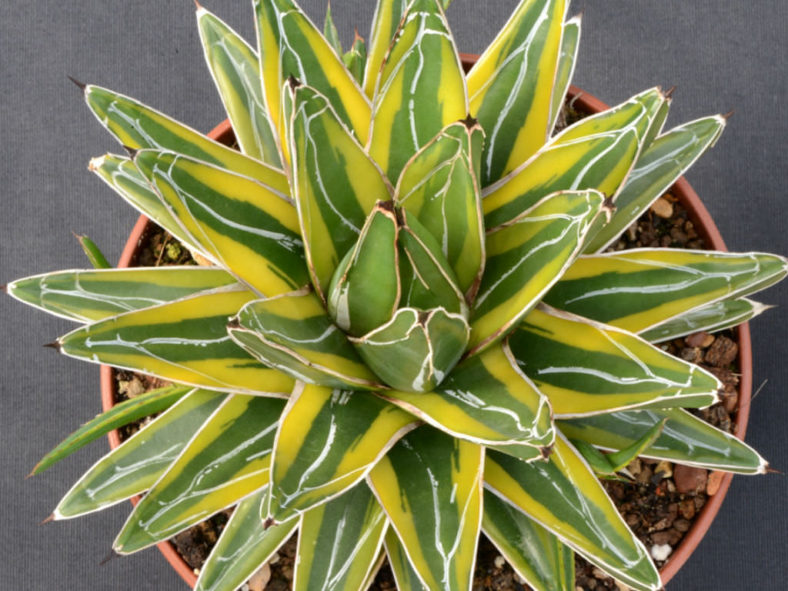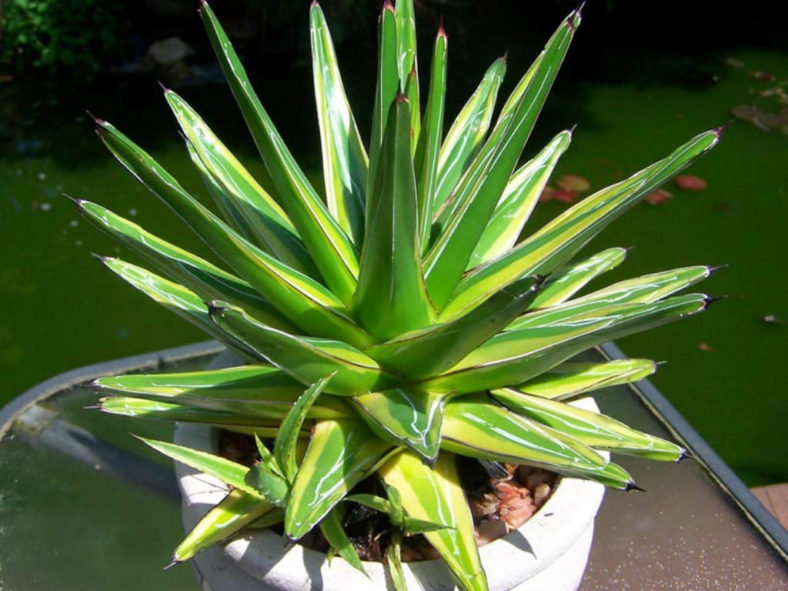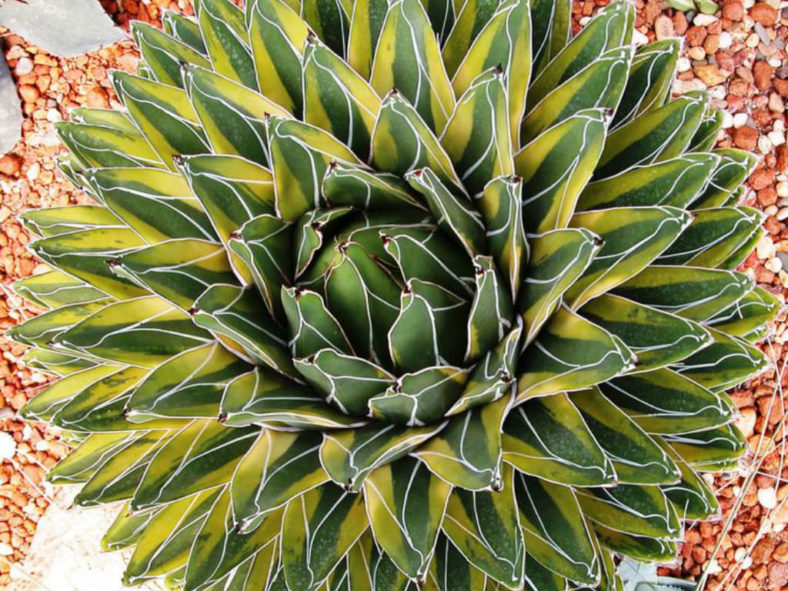Scientific Name
Agave victoriae-reginae 'Golden Princess'
Synonym(s)
Agave victoriae-reginae 'Kazo Bana', Agave victoriae-reginae 'Variegata', Agave victoriae-reginae 'Aurea Marginata', Agave victoriae-reginae 'Aureo-Marginata'
Scientific Classification
Family: Asparagaceae
Subfamily: Agavoideae
Genus: Agave
Origin
Agave victoriae-reginae 'Golden Princess' is a variegated cultivar of Agave victoriae-reginae.
Description
Agave victoriae-reginae 'Golden Princess', also known as Agave victoriae-reginae 'Kazo Bana', is a beautiful small succulent that forms compact rosettes of green leaves with broad, yellow margins in addition to the distinct white, slightly raised markings. The rosettes can grow up to 1 foot (30 cm) tall and 1.5 feet (45 cm) in diameter, and slowly produce offsets, forming a small clump with age. The leaves are trigonous, measuring up to 8 inches (20 cm) in length and 1.2 inches (3 cm) in width. They taper to a pointed tip and end in a short, black terminal spine. The margins of the leaves are smooth and spineless.
The flowers are creamy-white to pale yellow or sometimes in shades of red and purple. They appear in summer on an unbranched spike that can grow 13.1 feet (4 m) tall.

How to Grow and Care for Agave victoriae-reginae 'Golden Princess'
Hardiness: USDA hardiness zones 9a to 11b: from 20°F (-6.7°C) to 50°F (10°C).
Agaves are not difficult plants to grow. They are slow-growing and dramatic and will even thrive on a bit of neglect. If you are the type of person who likes to fuss with houseplants and water a lot, Agave is probably not the plant for you. On the other hand, if you are the type of person who likes to set it and forget it, and you have a sunny window, Agave might be the way to go. Be aware that some large varieties will eventually outgrow your room (unless you have a large greenhouse), and Agave can be aggressive. They have irritating sap and sometimes very sharp thorns that can cause injuries to small children and even pets.
Generally, Agaves do not require repotting every year. Most species commonly found in cultivation grow slowly and take a long time to outgrow their pot. It is also best to handle your plants as little as possible since they do not like to be disturbed. When you repot, refresh the spent soil with a new potting mix and ensure the plant is firmly anchored in its pot. However, be careful not to pot the Agave too deeply to encourage stem rot during the growing season.
Learn more at How to Grow and Care for Agave.
Links
- Back to genus Agave
- Succupedia: Browse succulents by Scientific Name, Common Name, Genus, Family, USDA Hardiness Zone, Origin, or cacti by Genus
Photo Gallery
Click on a photo to see a larger version.

